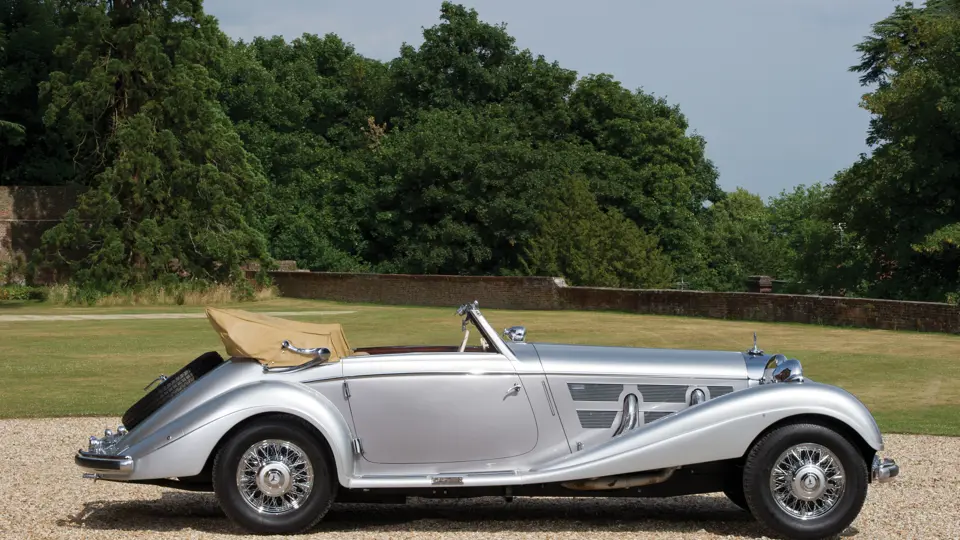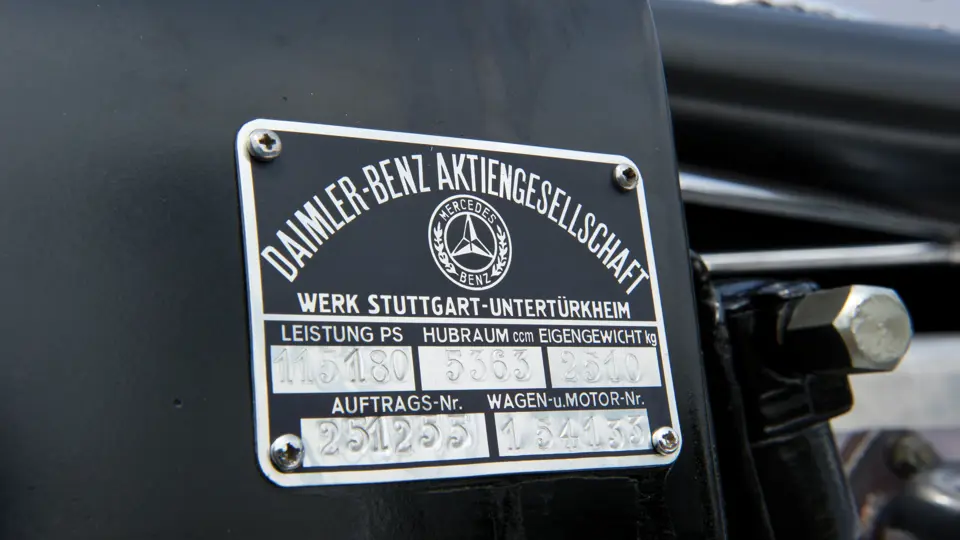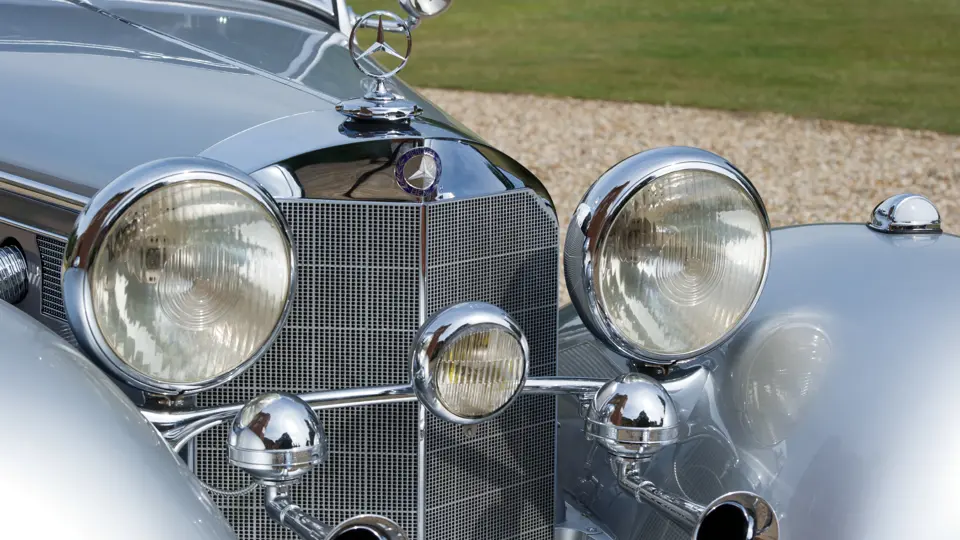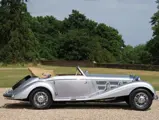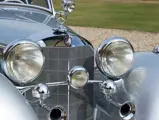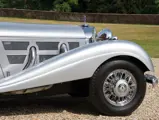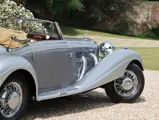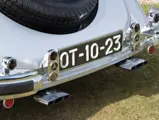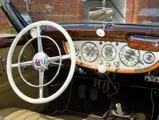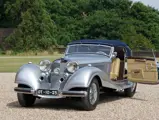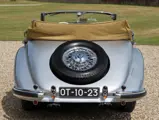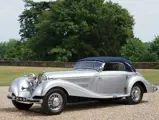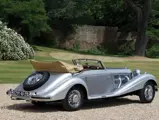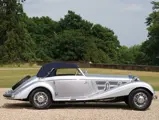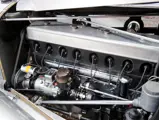
1938 Mercedes-Benz 540 K Special Cabriolet A
{{lr.item.text}}
£1,500,000 - £2,000,000 GBP | Not Sold
Mercedes Collection
{{bidding.lot.reserveStatusFormatted}}
- The star of the collection
- The most desirable 540 K cabriolet body style
- Special styling features inspired by the 540 K Special Roadster
- Delivered new to department store magnate Helmut Horten
- Well-known, colourful history
115/180 bhp, 5,410 cc supercharged overhead-valve inline eight-cylinder engine, four-speed manual transmission, four-wheel independent coil-spring suspension, and four-wheel hydraulic drum brakes. Wheelbase: 3,290 mm
The Mercedes-Benz coachworks at Sindelfingen developed the cabriolet style to an art form. Each beautiful cabriolet built on the legendary, supercharged, 5.4-litre, 115/180-horsepower, 540 K chassis was essentially different, and with Teutonic efficiency, Mercedes-Benz categorised its cabriolet offerings in six different configurations, designating each basic variant alphabetically.
There were three separate four-door styles, the cabriolets D, E, and F, which accommodated up to seven passengers in comfort and luxury. More importantly, three 2-door cabriolets combined luxury, tight weather protection, and sporting style in beautiful, subtle coachwork for anything from two to five people. The cabriolet B and cabriolet C had rear seating; the B had rear quarter windows, whilst the C had blind quarters on the folding top. The cabriolet A was the most exclusive style, as it was a luxurious two-seater with blind rear quarters and it had accommodations behind the front seats for the privileged occupants’ luggage.
Whilst most coachworks built at the Mercedes-Benz Karosserie at Sindelfingen was taken to the Mercedes-Benz factories at Untertürkheim or Mannheim to be installed on their chassis, the most exclusive vehicles, such as the 540 Ks, were assembled at Sindelfingen, where their assembly, finish, and trimming could be perfected by the company’s best workers. At each step along the way, the master craftsmen who had created the framing and panels and then finished them returned repeatedly to inspect the way their work was being assembled and to rectify any damage inflicted during assembly and testing.
Chassis 154133
Today, the great automobiles of the 1930s are held almost in reverence—such is the spell that their power and beauty weaves. Once upon a time, however, these great beasts were simply curiosities. It was the 1950s, and all over the world, the classics had yet to find appreciation with collectors. Yet, this is the period in which many of these cars found owners who appreciated and preserved them, even if their idea of “preservation” is not what we think of today.
The Mercedes-Benz 540 K offered here is the most important car in this collection, and it was likely one of the first 540 Ks to become familiar to the collector car community. It was owned for years by Long Island, New York, enthusiast Max Obie, whose collection also included the fabled Jonckheere-bodied “Round Door Rolls”. Obie, or a previous owner, had modified this car, building up the wings with heavy skirts, leading them into the body, and restyling the rear.
With appropriate brightwork and insignias attached, the 540 K made a tour of carnivals and fairgrounds through the East Coast of the United States, where it was promoted as “The Most Valuable Car in the World: Eva Braun’s $250,000 Hand-Made Golden Mercedes”. Ms Braun was Hitler’s long-time companion and, briefly, wife, although she never owned this 540 K, or any other 540 K for that matter. It was a welcome ruse for a world that had just defeated evil, and American fairgoers were more than happy to believe Obie’s hype on a sunny Saturday morning.
The 540 K eventually passed from Obie into the care of Thomas Kreid and, most famously, the late Tom Barrett. After which, it was then acquired by enthusiasts in Pennsylvania. By this time, in the 1990s, the car’s story had worn thin, and it was decided that it was time for a proper restoration. Stripping the body revealed that, under all of the modifications, it was, indeed, a genuine Cabriolet A. It had the most desirable two-passenger factory cabriolet bodywork on the 540 K chassis, and, more importantly, it was a later car that had the more curvaceous door lines and skirted wings. As much as possible of the original remaining sheet metal, including the doors, firewall, and cowl, was saved; the rear of the body had to be remade and was crafted to exacting original standards.
Further investigation by the RM Research Department has uncovered the Cabriolet A’s true earlier history. The original Mercedes-Benz kommission sheet records the order for the car as having been placed through Daimler-Benz Berlin on 13 April 1938, by Helmut Horten KG, Duisberg; it was listed as a Direcktionswagen, which literally means the “car of the director”, or the car of the boss! Before it was a sideshow attraction, this elegant 540 K had been the personal transportation of Helmut Horten, who built one of Germany’s largest pre-war department store empires and was able to continue its growth and success post-war, becoming one of the country’s richest men. His name remains a familiar byword of wealth and power in Germany today. Mercedes-Benz’s ultimate “owner-driver” automobile of this period was an obvious choice for Herr Horten to pilot through the streets of Berlin.
Notably, the car was returned to the factory shortly after its completion, where it was to be upgraded with a radiator that was mounted behind the crown of the front wings, similar to that of the famous Special Roadster. This feature was retained, six decades later, during the restoration, along with the flowing front wings that are unencumbered by a spare; the spare was instead installed in the rear deck, another Special Roadster-style touch, making this gorgeous Cabriolet A quite unique.
Presented in Fishsilver Metallic, the most famous Mercedes-Benz colour of this period, with a tasteful tan leather interior and a matching cloth top, this Cabriolet A still shows beautifully in all regards. A decade after the restoration, it would require only routine cosmetic and mechanical freshening to return to the show field. The wooden dashboard, with its mother of pearl instrument panel, is particularly stunning, and the ivory-finished steering wheel is a gorgeous counterpoint. In sum, this car is inviting, and to see it is to want to slip behind the wheel, head out of the city onto the autobahn, press the pedal to the carpet, and let the sounds of the supercharger carry one into the country.
That is the true magic of this 540 K Cabriolet A, a car that tempted Helmut Horten just as it will surely tempt its way into the heart of a new owner today. It has quite a story to tell. Max Obie, the irrepressible showman from Long Island, would appreciate that.
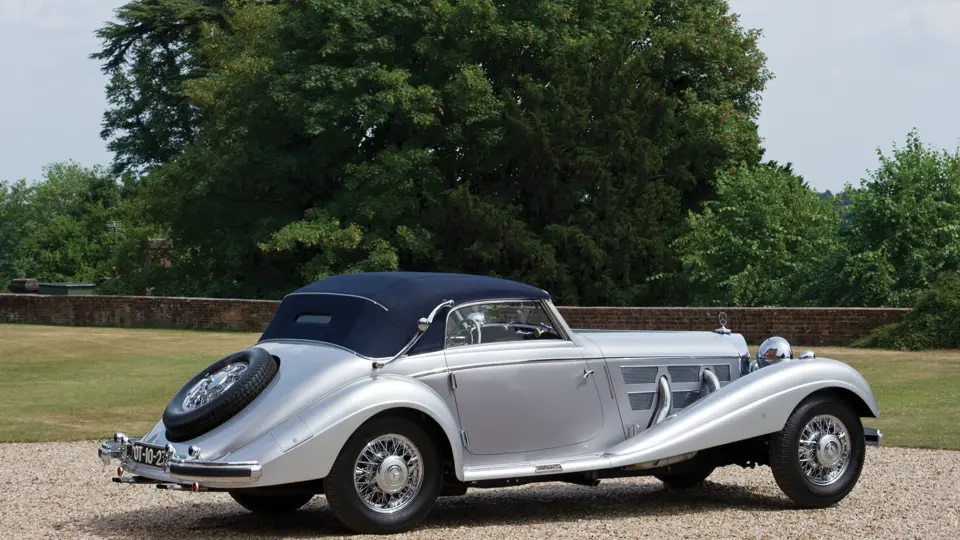

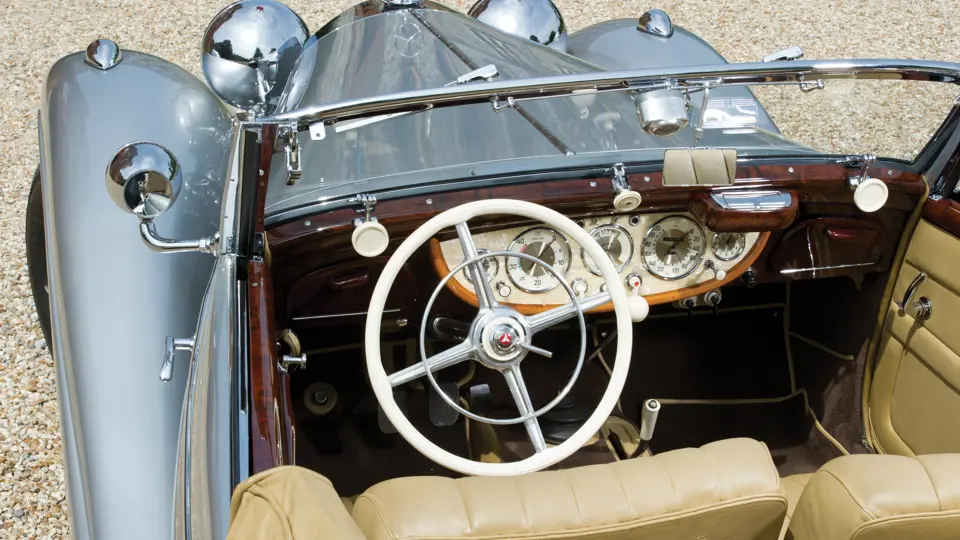


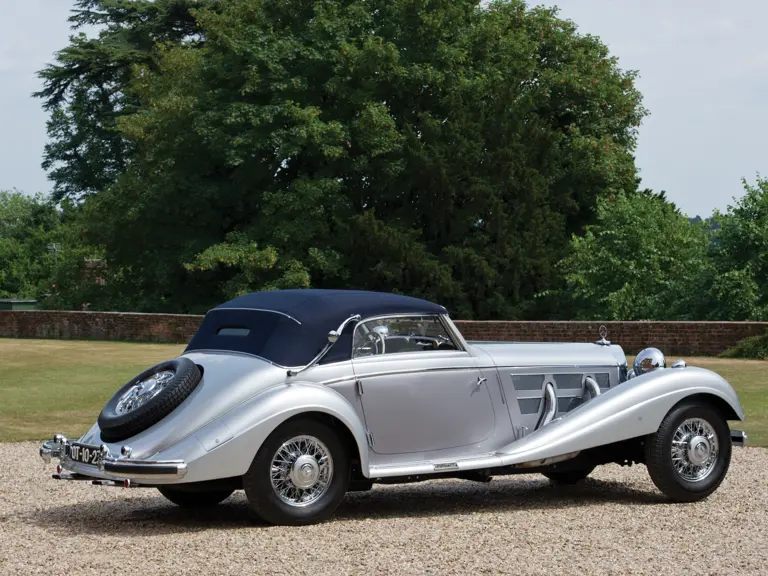
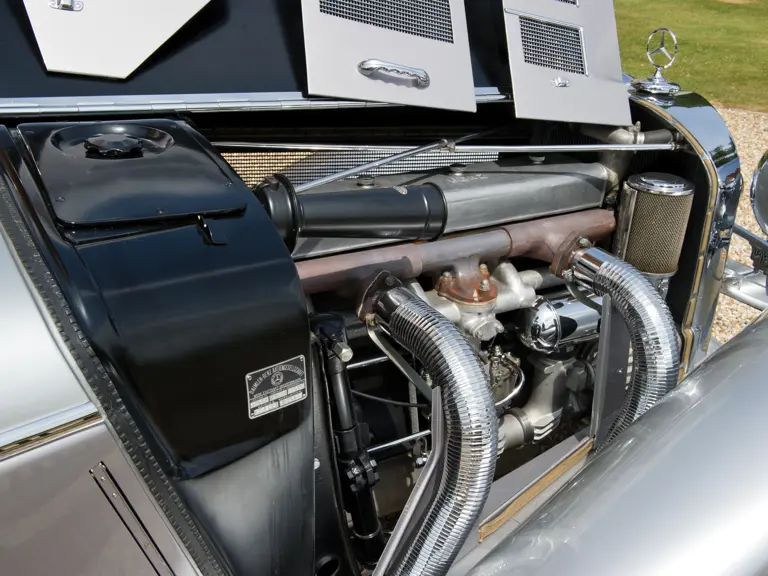
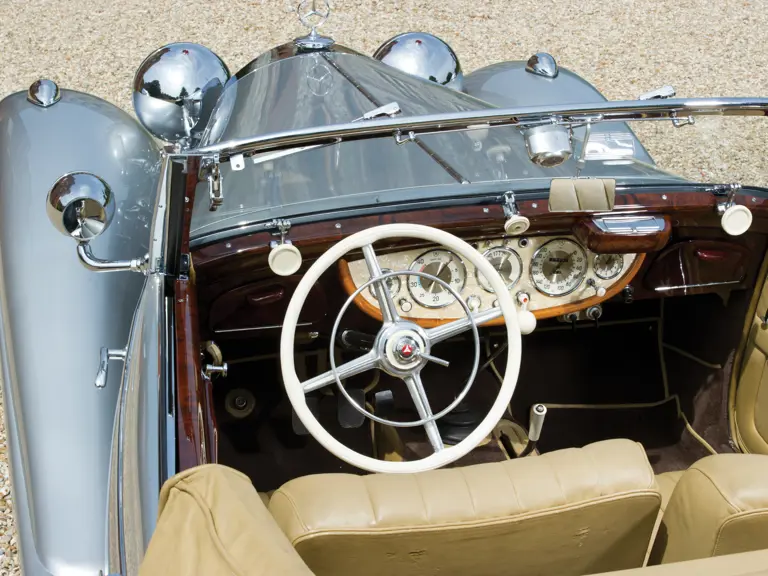
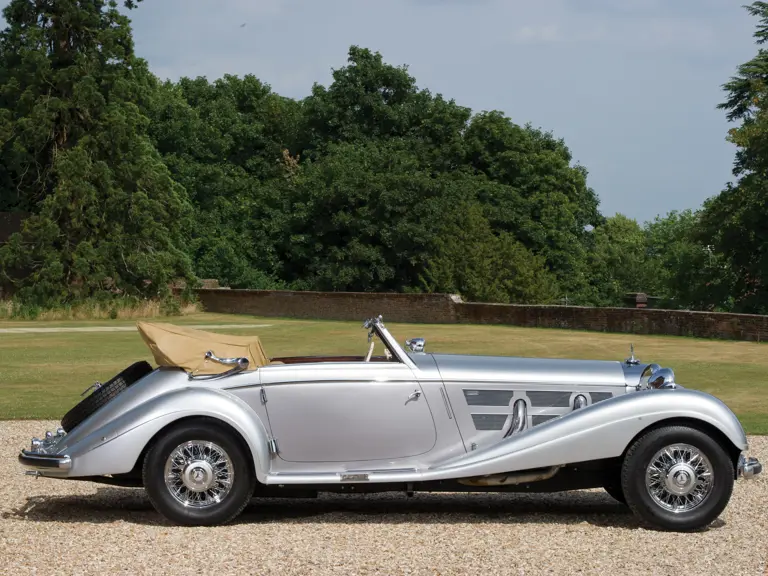
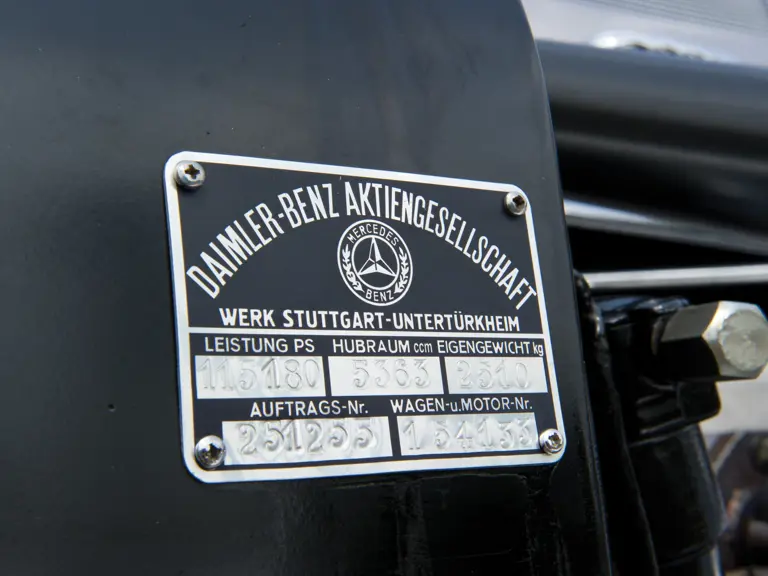
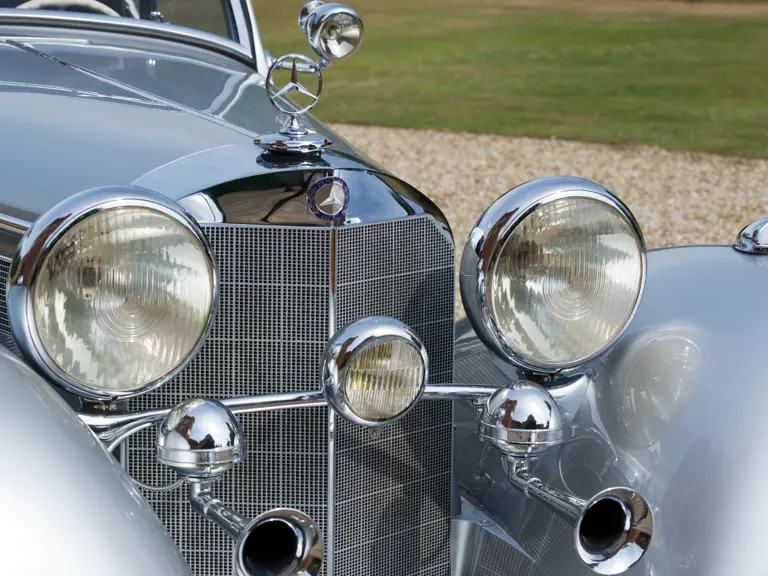
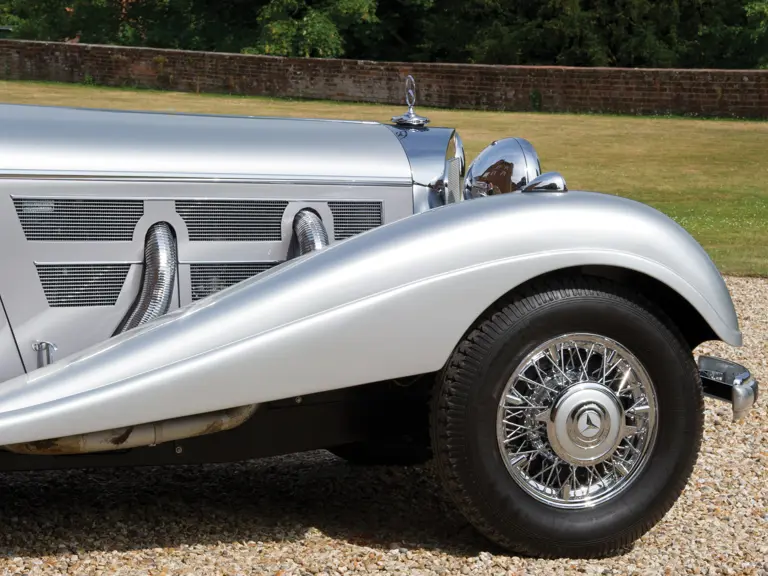
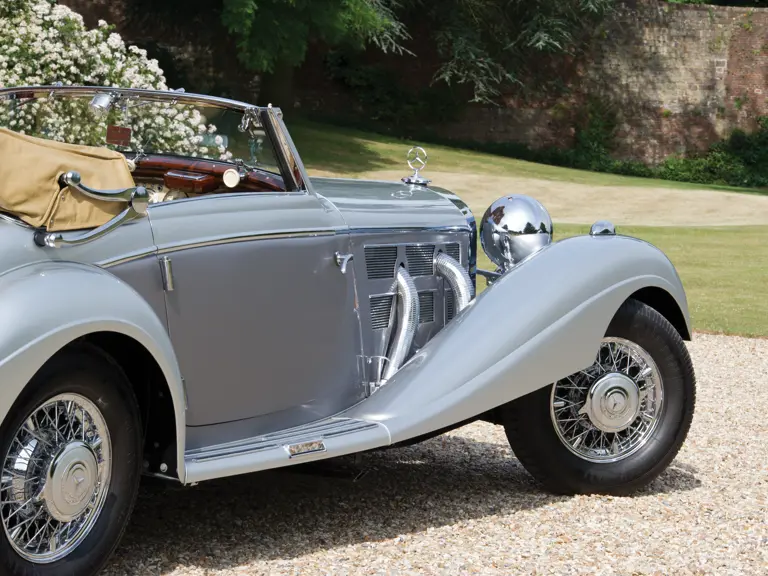
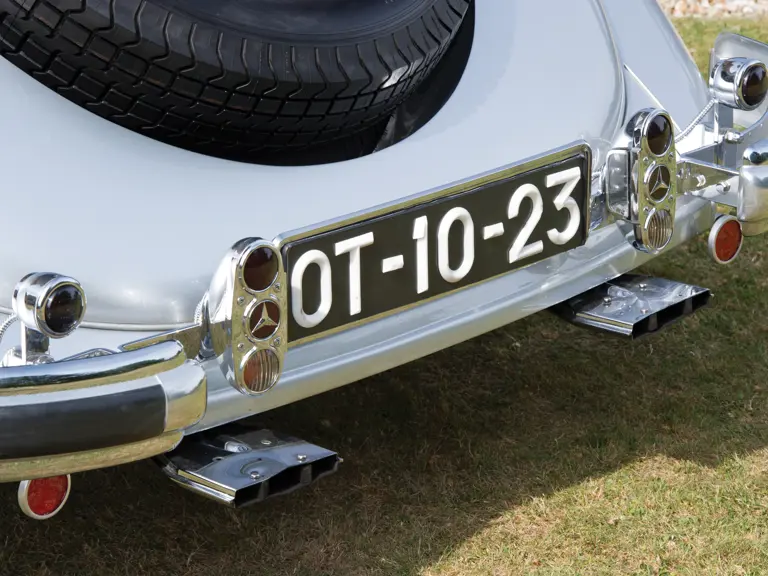
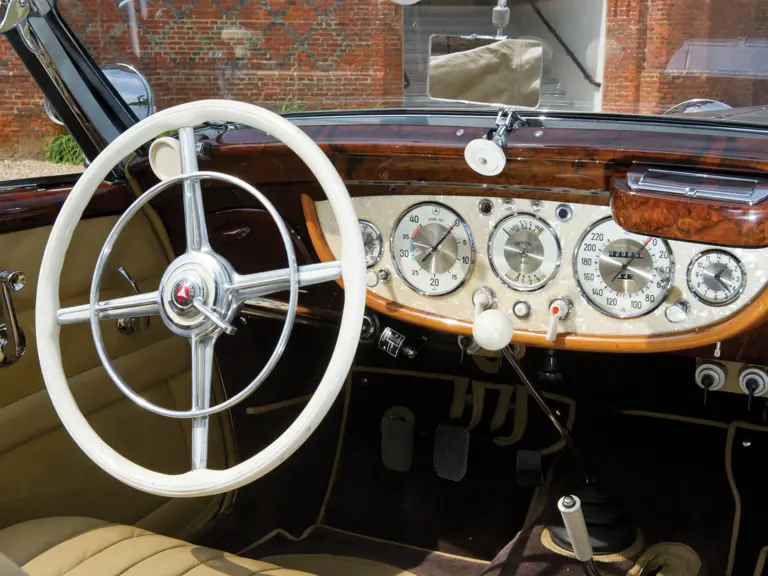
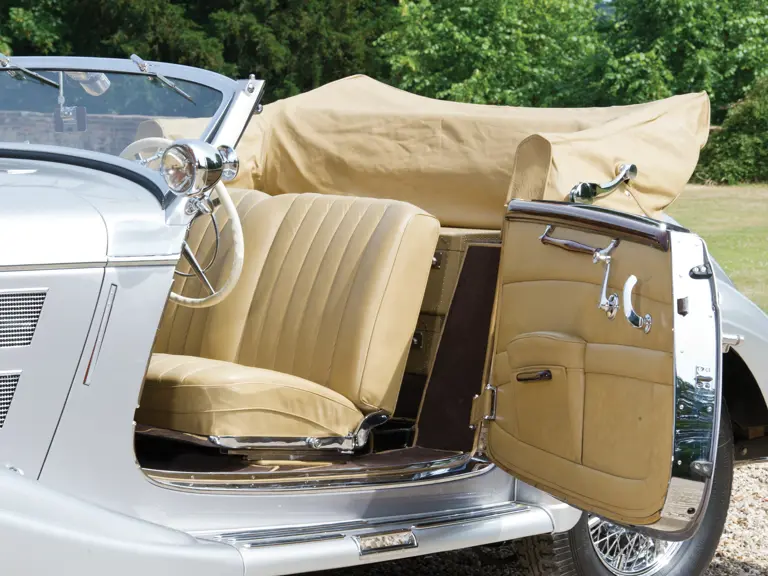
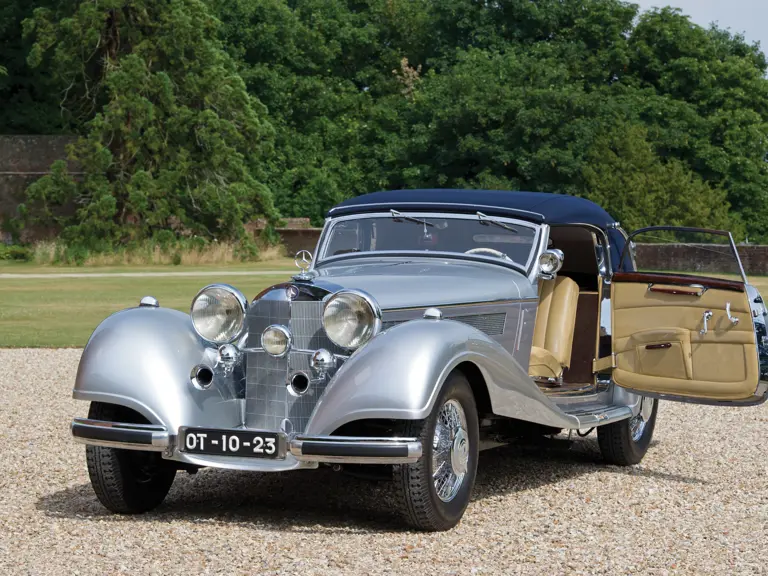
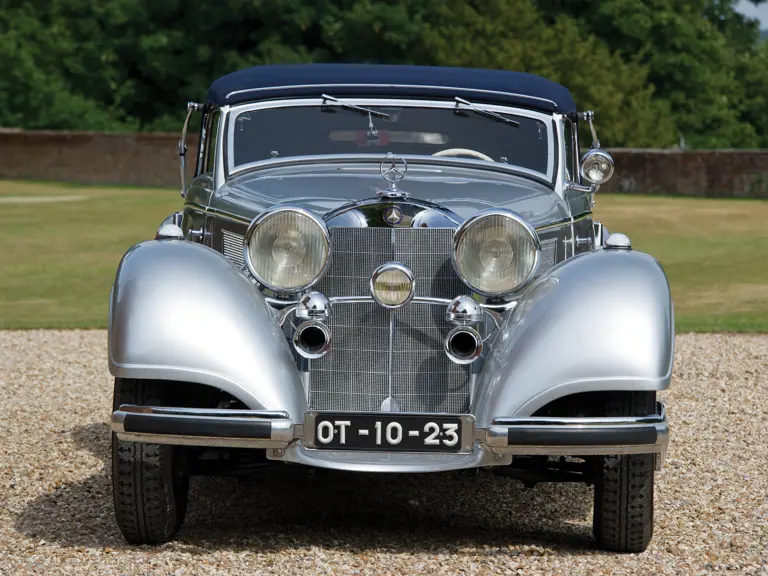


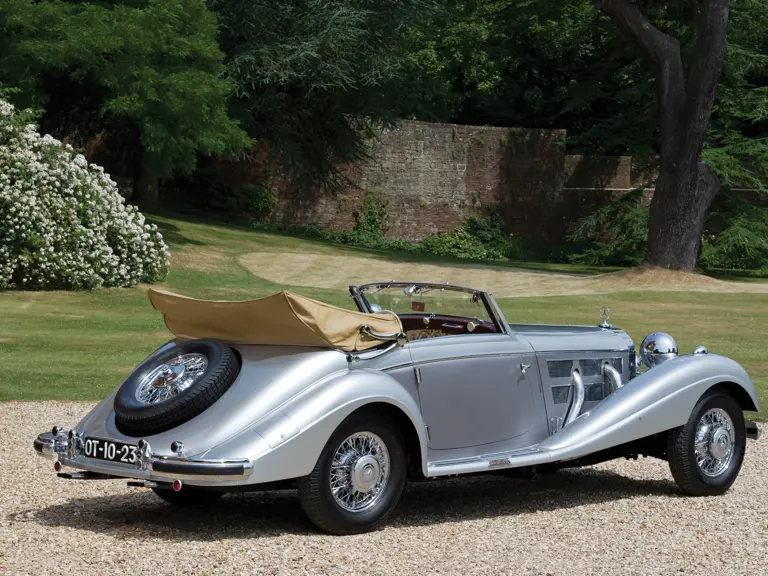
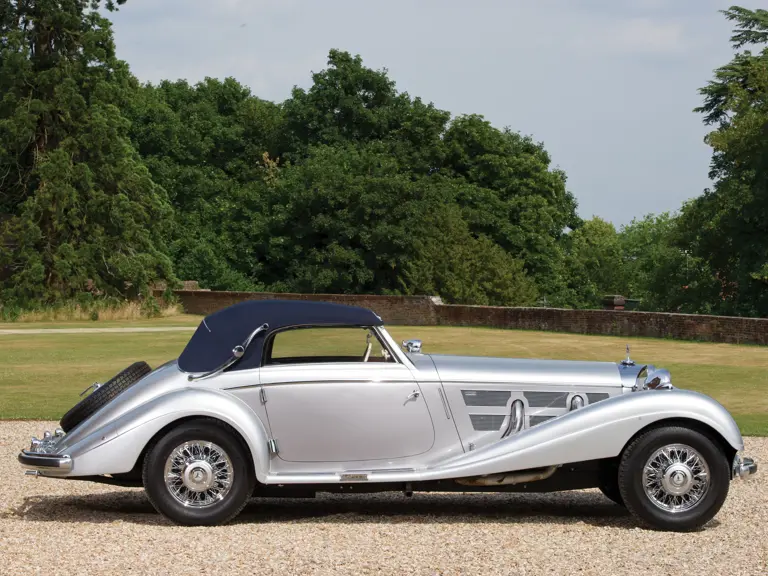
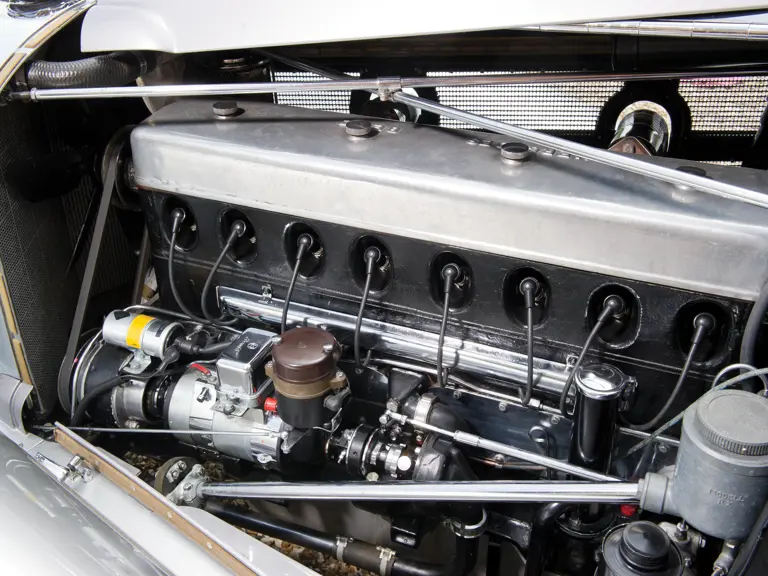
 | London, United Kingdom
| London, United Kingdom
